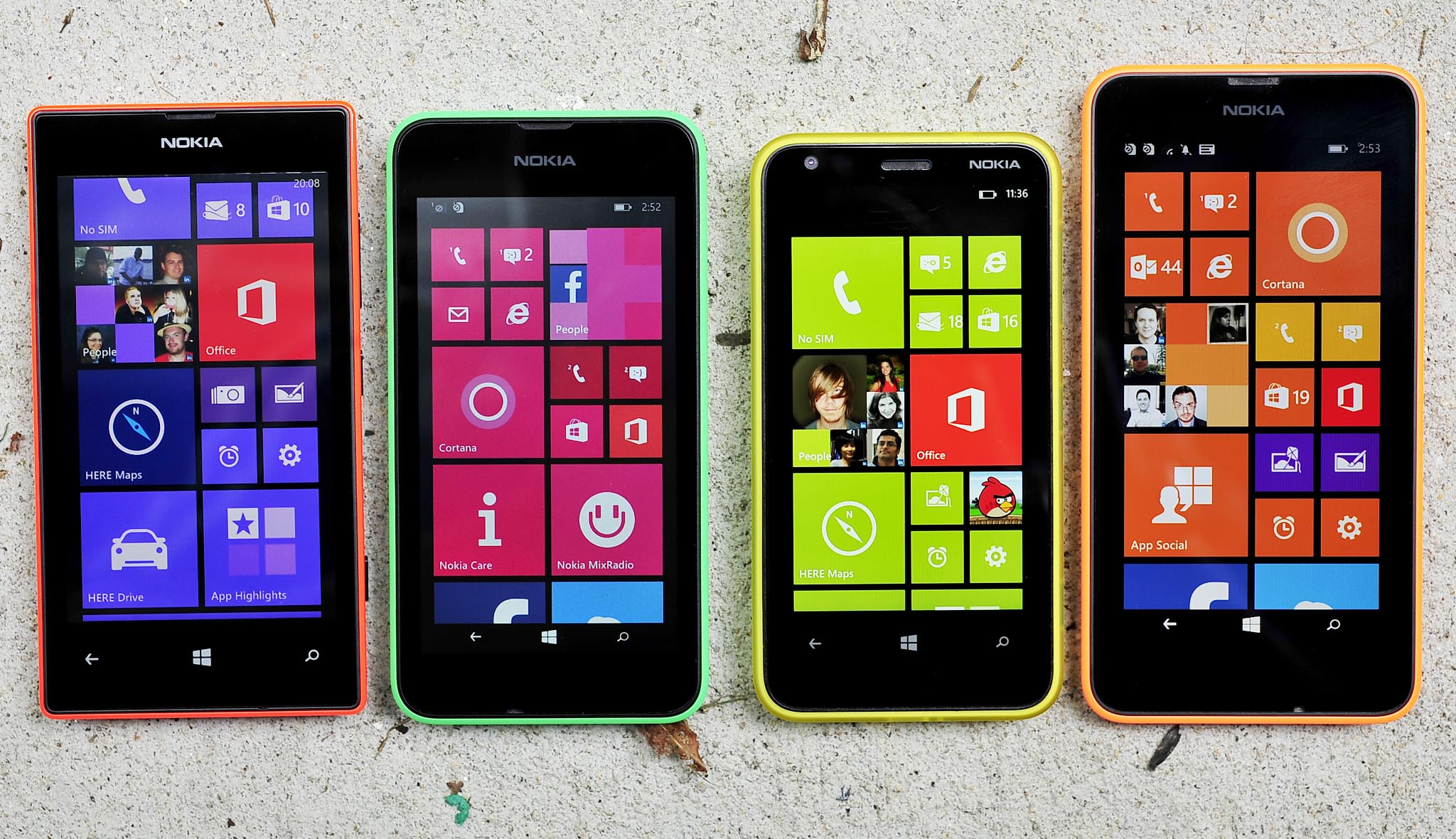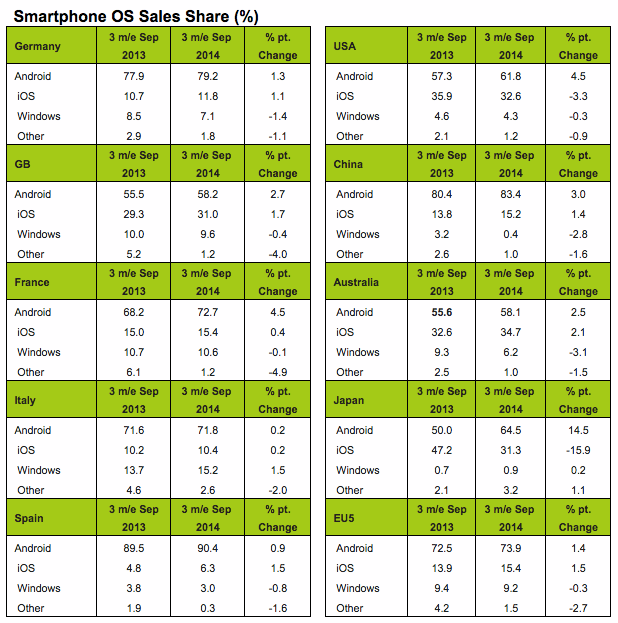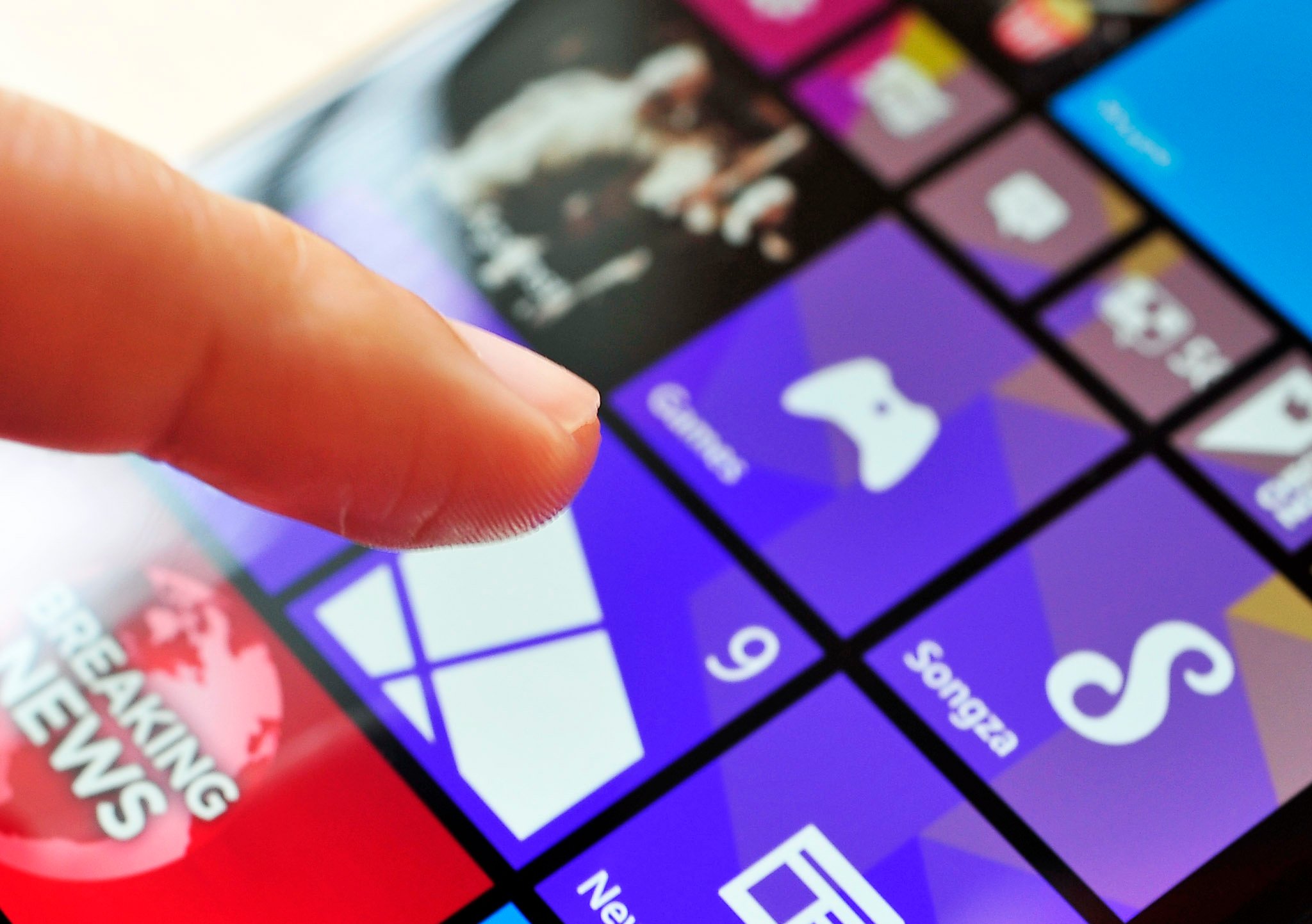Windows Phone sales drop slightly across markets during summer 2014 Lumia lull

New stats from Kantar WorldPanel reveal that Windows Phone sales have seen a slight decline for the three months to September 2014.
The Kantar numbers, while not dramatic, reflect two aspects of the current Windows Phone ecosystem: lack of new phones and a substantial portfolio from the competition, including new iPhones.

United States
According to Kantar, sales in the US for Windows Phone has dropped from 4.7 percent in August to a lower 4.3 percent in September. Likewise, going back one year and the sales are 4.6 percent in 2013 compared to the slightly lower 4.3 percent last month.
Overall, sales of Windows Phone are holding steadily as a relative percentage of overall smartphone purchases. That is the good news, if you were to look for the positive side. The negative is obvious: Windows Phone is still failing to break past any significant sales barriers in the US.
Europe
Heading to Europe and the 'big five', which includes UK, Germany, France, Italy, and Spain and Windows Phone is also holding steady at around 9 percent of overall smartphone sales. This number has dropped slightly from one year ago (9.4 percent versus 9.2).
Drops in Windows Phone purchases occurred in four of the 'big five' European countries with Italy being the exception. There, Windows Phone sales increased from 13.7 percent in September 2013 to 15.2 percent last month, well ahead of iOS, which stands at just 10.4 percent of smartphone purchases in that country.
iPhone growing but declining as a percent of sales
Indeed, perhaps the bigger story is how iPhone sales are also holding steady in Europe, with Windows Phone often within striking distance in overtaking Cupertino. It is only in Japan and the United States where the iPhone is above 30 percent, well out of the European range of 15 percent. However, for Japan and the US, both countries are seeing a decline in iPhone sales (47.2 to 31.3 percent for Japan; 35.9 to 32.6 percent, year-over-year in the US), even as the market grows as a whole.
Get the Windows Central Newsletter
All the latest news, reviews, and guides for Windows and Xbox diehards.
Additionally, the full-impact of the new iPhone 6 and 6 Plus is not realized in these numbers as we head into the holiday season.

Analysis
It is worth noting that sales of the Lumia 730, Lumia 735, and Lumia 830 are not reflected in this latest batch of numbers from Kantar. Those phones were not made available until the very end of September, with a launch in the US market not set until next week for the Lumia 830. It is clearly too early to tell if those phones will make any impact. Although, due to their positive reviews and affordable price points, they certainly stand a chance.
Lumia phones, now under the auspices of Microsoft, are still in a state of flux. The Lumia 930 is the only flagship Windows Phone for 2014 and reception to that device has been soft, to say the least. Low-cost phones like the Lumia 530 and Lumia 630/635 are also having a sustaining but limited effect on overall sales for Microsoft.
With no releases from major partners like HTC or Samsung in Europe for all of 2014, the burden for Windows Phone sales falls onto the Lumia. The problem is there has not been a perceived 'hit' for the Lumia line this year to cause a stir in mass adoption of Windows Phone.
Will the Lumia 73x and Lumia 830 series change any of that? The good news there is reviews so far have been very bullish, which we hope is reflected in future sales. Under Microsoft, the Lumia 73x and Lumia 830 have seen a fast turnaround from announcement to direct channel sales and stock at retailers. This quickness to market is unlike previous Lumia releases which often spanned months, losing the luster of 'new' by the time they were available in shops.

Lack of a flagship Windows Phone
However, despite the positive reaction to the new Lumias, Microsoft still needs a 'wow' device to woo the tech media and new potential customers. That phone was supposed to be 'McLaren' (aka 'Goldfinger') but as we reported back in July, the device was cancelled in its last stages of development. Clearly, that decision was not ideal, although we have to assume Microsoft had valid reasons for canning their one Lumia flagship going into the holiday season.
The other lingering concern is Windows 10. The new converged OS is set to debut in mid-2015 with likely hardware announcements in late April during the Build conference. A new, united OS with universal apps is a tantalizing launch-partner for new, high-end hardware. Nonetheless, in terms of marketing, that is a lifetime away.
Windows Phones, especially those with the latest Snapdragon chipsets, are likely to get the Windows 10 upgrade. So the question for Microsoft is should they launch something in early 2015 or go all out with a Windows 10 OS and hardware co-launch? If they were to release a high-end phone too early in 2015, Microsoft could blow their wad for an impactful OS launch by mid-year. Releasing two 'flagship' Lumias within six months of each other could anger early-adopters (just look back at the Lumia 925 announcement).
Microsoft has some tough choices ahead. The rest of 2014 and early 2015 appear to be a transition phase as the Lumia team's full integration into Microsoft results in the first "pure" Microsoft Lumia device. This true Microsoft Lumia is about as close as we will get to a fabled 'Surface Phone', for what it is worth. Likewise, for the OS, which is on the cusp of an awe-inspiring unification with significant potential to increase sales. The problem for Microsoft is most of that is still months away from becoming a reality.
There may be some respite ahead as early next week AT&T and Microsoft will announce the Lumia 830 and HTC One for Windows. According to our sources those phones go on sale just four days later for Friday, November 7.
Source: Kantar WorldPanel; via TechCrunch

Daniel Rubino is the Editor-in-chief of Windows Central. He is also the head reviewer, podcast co-host, and analyst. He has been covering Microsoft since 2007 when this site was called WMExperts (and later Windows Phone Central). His interests include Windows, laptops, next-gen computing, and wearable tech. He has reviewed laptops for over 10 years and is particularly fond of 2-in-1 convertibles, Arm64 processors, new form factors, and thin-and-light PCs. Before all this tech stuff, he worked on a Ph.D. in linguistics, performed polysomnographs in NYC, and was a motion-picture operator for 17 years.
